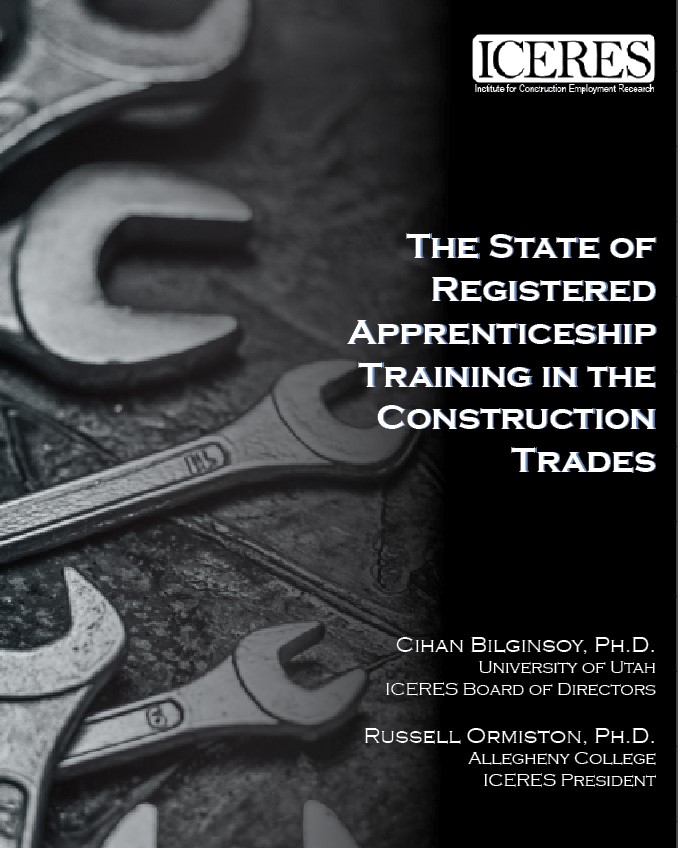
The State of Registered Apprenticeship Training in the Construction Trades
Now AVAILABLE
Printed reports will be available for $75 plus $10 shipping and handling
For inquiries, contact Dr. Julie Brockman at juliebrockman@iceres.org or (517) 285-8670.
OVERVIEW
Registered apprenticeship programs represent the lifeblood of the construction industry. Across a range of skilled trades, apprenticeships develop the skills needed for the sustainability of the industry while offering career pathways to good-paying jobs for blue-collar American workers. Typically privately-funded, registered apprenticeships represent an established and effective career development alternative to higher education that often does not require a nickel of student debt or a dime of government tax dollars.
Unfortunately, assessing the outcomes associated with registered apprenticeship training programs has long been problematic. Data collection processes across states and programs have not historically been standardized or consistent. Combined with incomplete and incorrect data in some jurisdictions, these issues have significantly complicated analyses attempting to compare outcomes across trades and jurisdictions. This, in turn, has created obstacles in benchmarking program success and shaping industry-level and policy-making efforts to best support the workforce sustainability and development efforts in the construction sector.
This report resolves these issues. Relying on his decades of experience working with apprenticeship data for academic research, Dr. Cihan Bilginsoy (Professor Emeritus, University of Utah) has teamed with Dr. Russell Ormiston (Associate Professor, Allegheny College) to produce perhaps the most comprehensive statistical report published to date on construction apprenticeships in the United States. Relying almost exclusively on easy-to-interpret graphs and the identification of “Key Stats,” this report covers 15 chapters in 71 pages, focusing on data from 2015-2021. These chapters include:
Background
Chapter 1: The Construction Labor Market
Registrations
Chapter 2: Construction vs. Other Occupations
Chapter 3: Joint vs. Non-Joint Programs (i.e., Union vs. Non-Union)
Chapter 4: Individual Trades
Completions and Cancellations
Chapter 5: Joint vs. Non-Joint Programs
Chapter 6: Individual Trades
Demographics (includes data on registrations, cancellations, completions)
Chapter 7: Gender
Chapter 8: Race
Chapter 9: Ethnicity
Chapter 10: Veteran Status
Chapter 11: Age
Chapter 12: Educational Attainment
Chapter 13: On-the-Job Training Credit
Program Characteristics
Chapter 14: Training Models
Program Outcomes
Chapter 15: Hourly Wage at Completion
